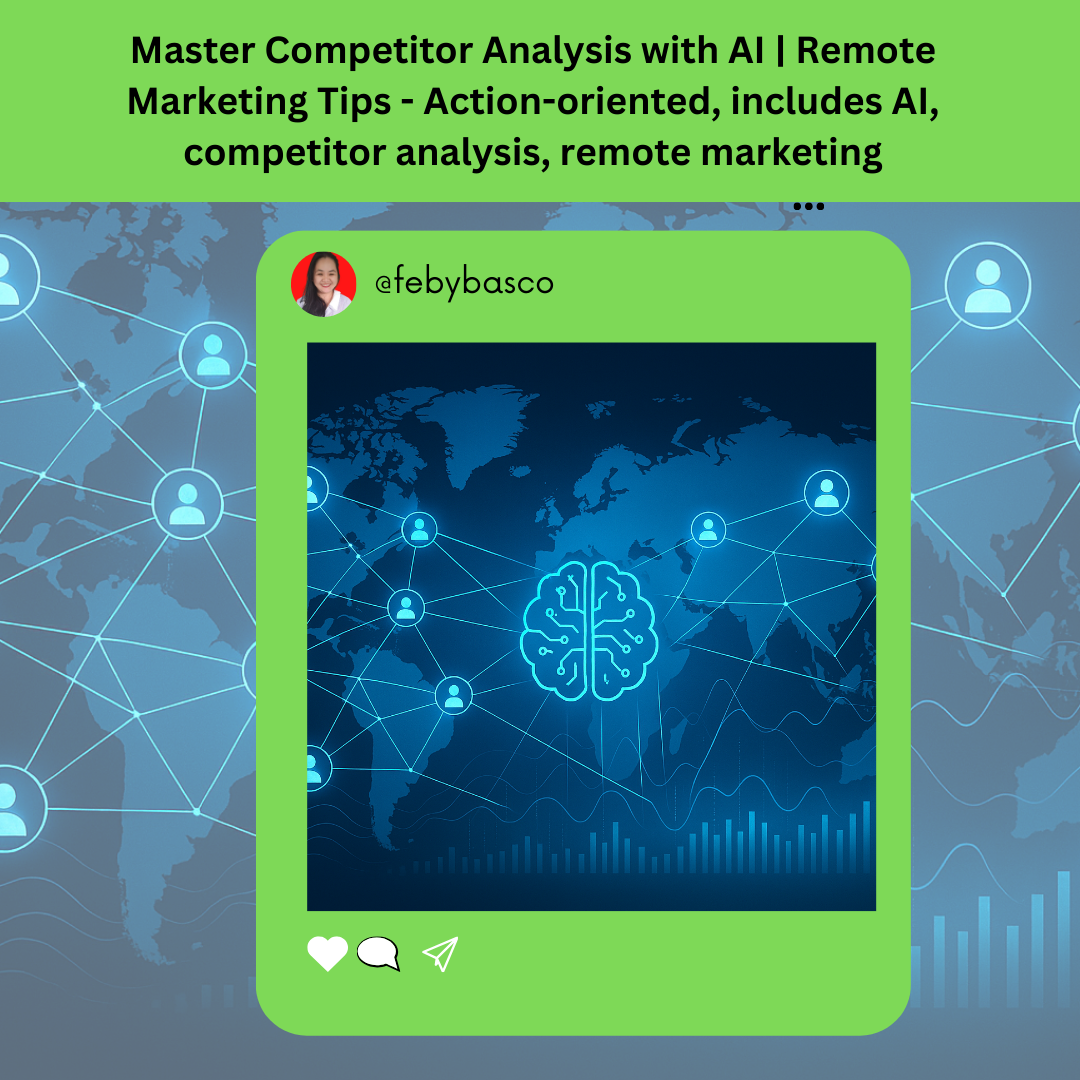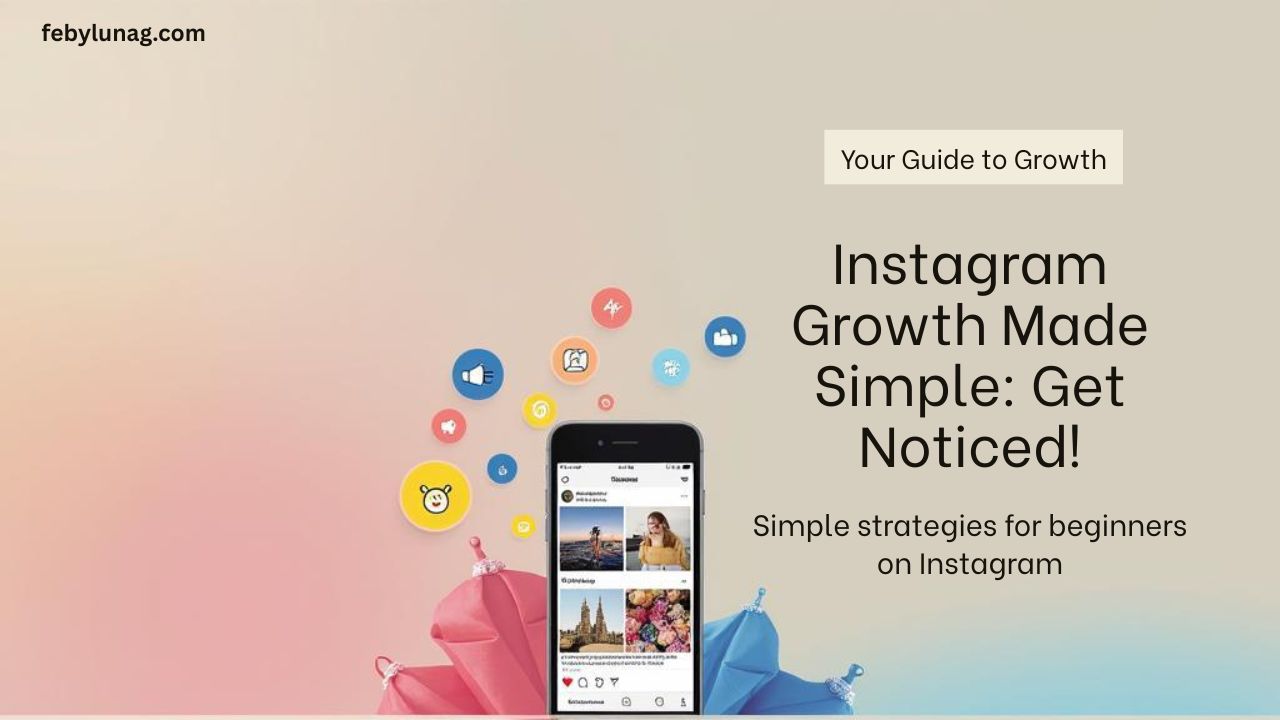The digital marketing landscape is a relentless battlefield. Brands constantly vie for attention, clicks, and conversions. For marketing teams, staying ahead requires not just creativity and execution, but also a deep understanding of the competitive environment. This is where competitive analysis (CA) comes in – the systematic process of identifying your competitors and evaluating their strategies to determine their strengths and weaknesses relative to those of your own product or service.
However, for remote marketing teams, conducting thorough and timely competitive analysis presents unique challenges. Geographic separation can hinder spontaneous brainstorming, accessing shared resources might be clunkier, and maintaining a unified, real-time view of the market requires deliberate effort and the right technology. Manually tracking competitors across multiple channels – their social media buzz, SEO rankings, ad campaigns, pricing updates, content rollouts – is already a Herculean task. Doing it effectively across different time zones and home offices? Even tougher.
Enter Artificial Intelligence (AI).
AI is no longer a futuristic buzzword; it’s a transformative force reshaping industries, and marketing is no exception. AI-powered tools are revolutionizing competitive analysis, turning it from a reactive, often tedious process into a proactive, insightful, and highly efficient strategic function. For remote teams, these tools are particularly powerful, acting as a centralized brain that processes vast amounts of data, identifies patterns invisible to the human eye, and delivers actionable insights directly to distributed team members.
Why AI is a Game-Changer for Competitive Analysis (Especially for Remote Teams)
Traditional competitive analysis often relies on manual searches, spreadsheet tracking, and subjective interpretations. This approach suffers from several limitations:
- Time-Consuming & Resource-Intensive: Manually gathering data from websites, social platforms, ad networks, and news sources takes significant time and manpower.
- Limited Scope & Scale: It’s practically impossible for humans to monitor everything competitors are doing across all channels in real-time.
- Prone to Bias & Inconsistency: Analysis can be influenced by individual perspectives and may lack objective rigor.
- Reactive, Not Predictive: Manual methods often spot trends only after they’ve become obvious, missing early opportunities or threats.
AI overcomes these hurdles by:
- Automating Data Collection: AI algorithms can continuously scan the web, social media, ad platforms, and more, gathering competitor data 24/7.
- Processing Massive Datasets: AI excels at sifting through enormous volumes of information to find relevant signals.
- Identifying Complex Patterns: Machine learning models can detect subtle shifts in competitor strategy, emerging market trends, and customer sentiment.
- Providing Predictive Insights: Some AI tools can forecast market shifts or competitor moves based on historical data.
- Ensuring Objectivity & Consistency: AI analysis is data-driven, reducing human bias.
- Centralizing Intelligence: Cloud-based AI platforms provide a single source of truth accessible to all remote team members, regardless of location.
Let’s explore the specific ways AI tools can empower remote marketing teams in three key areas: tracking competitor activity, analyzing market trends, and identifying new opportunities.
1. AI Tools for Tracking Competitor Activity
Knowing what your competitors are doing right now is fundamental. AI tools automate this surveillance, providing real-time alerts and comprehensive reports accessible from anywhere.
Key Activities Tracked by AI:
- Social Media Mentions & Sentiment: Monitoring brand mentions, engagement rates, sentiment analysis (positive, negative, neutral), and influencer collaborations.
- SEO & SEM Performance: Tracking keyword rankings, backlink profiles, paid search keywords, ad copy variations, and estimated ad spend.
- Content Strategy: Analyzing blog posts, articles, videos, and webinars for topics, keywords, frequency, and performance.
- Website Changes: Detecting updates to website copy, structure, technology stack, and crucially, pricing or product feature changes.
- Email Marketing & Newsletters: Some tools can help analyze competitor email campaigns (requires opt-in or publicly available examples).
- Press Releases & News Coverage: Tracking official announcements and media portrayal.
Here are some examples of AI-powered tools that excel in competitor tracking:
| Tool Category | Example Tools | Core AI Function | Key Features for Remote Teams | Potential Benefits |
|---|---|---|---|---|
| Social Listening & Mention Monitoring | Mention, Brand24, Talkwalker | Real-time monitoring of brand/keyword mentions across web & social; Sentiment analysis | Customizable real-time alerts (Slack, email); Centralized dashboard; Collaborative features; Trend identification over time | Instantly react to competitor PR or crises; Understand public perception; Track campaign effectiveness comparatively. |
| SEO/SEM Intelligence | Semrush, Ahrefs, SpyFu | Analyzing keyword rankings, backlinks, PPC ads, estimated traffic & spend | Comprehensive dashboards accessible anywhere; Automated reporting; Competitor keyword gap analysis; Ad copy tracking | Identify competitor SEO/PPC strategies; Find profitable keywords they use; Benchmark your performance; Optimize ad spend. |
| Content Analysis | BuzzSumo, Similarweb | Identifying top-performing content; Analyzing content formats & topics; Website traffic analysis | Content idea generation based on competitor success; Trend analysis; Shareable reports; Benchmarking content performance | Understand what resonates with the target audience; Inform your content calendar; Identify content gaps. |
| Website Change Detection | Visualping, Hexowatch | Automated monitoring of specific webpage elements for changes (e.g., pricing, features) | Email/Slack notifications on detected changes; Visual comparison screenshots; Frequency customization | React quickly to competitor price drops or product launches; Stay informed on website strategy shifts. |
These tools essentially act as vigilant eyes and ears for your remote team, ensuring everyone stays informed about the competitive landscape without needing to manually check dozens of sources daily. The automated alerts and centralized dashboards are crucial for distributed teams, ensuring key intelligence isn’t missed due to time zone differences or communication lags.
2. AI Tools for Analyzing Market Trends
Beyond tracking individual competitors, understanding broader market trends is vital for strategic planning. AI can analyze vast datasets to reveal emerging topics, shifts in consumer behavior, and industry trajectories that might not be immediately obvious.
AI-Driven Trend Analysis Capabilities:
- Topic & Keyword Trend Identification: Spotting rising interest in specific subjects or search terms within your industry.
- Consumer Sentiment Analysis at Scale: Understanding overall market feeling towards certain product types, features, or industry issues.
- Predictive Analytics: Forecasting potential market growth areas or declining interest based on historical data patterns.
- Influencer & Thought Leader Identification: Finding key voices shaping opinions within your niche.
- Demographic & Behavioral Shifts: Analyzing data to understand how target audience preferences or online behavior are changing.
Tools leveraging AI for trend analysis include:
| Tool Category | Example Tools | Core AI Function | Key Features for Remote Teams | Potential Benefits |
|---|---|---|---|---|
| Trend Spotting Platforms | Exploding Topics, Glimpse | Identifying rapidly growing topics & keywords across the web | Simple, visual dashboards; Email digests of trending topics; Category filtering | Discover emerging niches before they become mainstream; Inform content strategy & product development; Stay ahead of the curve. |
| Advanced Social Listening | Talkwalker, Brandwatch | Deep sentiment analysis; Trend forecasting; Image & video analysis | Customizable dashboards; Real-time trend alerts; Global data coverage; API integrations | Understand market sentiment nuances; Predict viral trends; Identify unmet consumer needs expressed online. |
| Market Research & Consumer Intelligence | Similarweb, Statista (with AI features) | Analyzing industry traffic trends; Audience demographics & behavior; Market share estimation | Comprehensive market overview reports; Benchmarking tools; Data visualization; Exportable data for remote collaboration | Gain a holistic view of the market size & dynamics; Understand audience overlaps with competitors; Inform market entry strategies. |
| Content & Keyword Research | BuzzSumo, Semrush | Analyzing trending content; Identifying question-based queries; Keyword trend data | Content discovery engines; Question analyzers; Historical keyword volume & trend graphs | Align content with current interests; Address audience pain points directly; Optimize content for trending searches. |
For remote teams, these AI trend analysis tools provide a shared, data-backed understanding of the market’s pulse. Instead of relying on anecdotal evidence or siloed observations, the entire team can access objective insights about where the industry is heading, facilitating more aligned and effective strategic planning sessions, even when conducted virtually.
3. AI Tools for Identifying Opportunities
Competitive analysis isn’t just about defense; it’s also about offense. AI can help pinpoint weaknesses in competitor strategies, unmet customer needs, and untapped market niches, revealing valuable opportunities for growth.
How AI Uncovers Opportunities:
- Gap Analysis (Keywords & Content): Identifying keywords competitors rank for that you don’t, or topics they cover poorly/not at all.
- Predicting Competitor Weaknesses: Analyzing patterns that suggest potential vulnerabilities (e.g., declining engagement, negative sentiment spikes).
- Identifying Underserved Niches: Analyzing market conversations and search data to find pockets of demand with low competition.
- Partnership & Collaboration Suggestions: Some AI tools can identify potential synergistic partners based on audience overlap or complementary offerings.
- Feature & Product Development Insights: Analyzing customer feedback (on competitor products) to identify desired features or improvements.
AI tools geared towards opportunity identification:
| Tool Category | Example Tools | Core AI Function | Key Features for Remote Teams | Potential Benefits |
|---|---|---|---|---|
| SEO Gap Analysis | Ahrefs (Content Gap), Semrush (Keyword Gap, Market Explorer) | Comparing your domain against competitors to find unique or weak ranking areas | Easy side-by-side domain comparison; Filtering options; Exportable keyword/topic lists | Find easy-win keywords; Discover content topics competitors miss; Prioritize SEO efforts effectively across the remote team. |
| Predictive Sales & Marketing Intelligence | Tools like HubSpot (with AI features), Salesforce Einstein | Analyzing customer & prospect data to predict likelihood to buy; Identifying cross-sell/upsell opportunities | Integration with CRM; Shared insights within sales/marketing platforms; Lead scoring prioritization | Focus remote sales/marketing efforts on high-potential leads; Identify opportunities within the existing customer base. |
| Customer Feedback Analysis | MonkeyLearn, Talkwalker | Analyzing reviews & feedback (from G2, Capterra, social media) for sentiment & themes | Automated tagging of feedback topics; Sentiment scoring; Trend analysis of customer complaints/requests | Identify competitor product weaknesses; Discover unmet customer needs; Inform your product roadmap and messaging. |
| Niche & Micro-Trend Finders | Exploding Topics, LowFruits | Surfacing low-competition keywords & emerging niche topics | Filtering by search volume, competition difficulty; Data visualization | Discover untapped market segments; Target long-tail keywords with high intent; Build authority in emerging areas quickly. |
By leveraging these AI tools, remote marketing teams can move beyond simply reacting to competitors and proactively carve out their own advantages. The ability to quickly identify and share data-driven opportunities ensures that the entire team, no matter where they are located, can contribute to strategic growth initiatives.
Integrating AI Competitive Analysis into Remote Workflows
Simply subscribing to AI tools isn’t enough. Remote teams need to integrate them effectively into their existing workflows:
- Define Clear Objectives: What specific questions do you need AI CA to answer? Are you tracking brand perception, looking for SEO gaps, or monitoring pricing? Clear goals prevent data overload.
- Choose the Right Tools: Select tools based on your objectives, budget, team size, and technical expertise. Consider tools with strong collaboration features (shared dashboards, alerts, integrations like Slack).
- Assign Ownership & Roles: Designate team members responsible for monitoring specific tools or areas of analysis. Ensure roles are clear.
- Establish Communication Cadence: Set up regular virtual meetings (e.g., weekly or bi-weekly) specifically to discuss AI-driven insights. Use shared documents or project management tools to track actions.
- Leverage Automation & Alerts: Configure tools to send real-time alerts for critical competitor activities (e.g., major announcements, price changes) to relevant Slack channels or email groups. Automate report generation where possible.
- Train Your Team: Ensure team members know how to use the tools and, more importantly, how to interpret the data and translate it into actionable strategies.
- Combine AI Insights with Human Expertise: AI provides the ‘what’, but humans provide the ‘why’ and ‘what next’. Encourage critical thinking and strategic discussion around the data. AI is a co-pilot, not the pilot.
- Iterate and Refine: Regularly review the effectiveness of your AI CA process. Are the tools providing value? Are the insights actionable? Adjust your approach as needed.
Challenges and Considerations
While powerful, AI tools for competitive analysis aren’t without challenges:
- Cost: Many advanced AI tools require significant subscription fees.
- Data Accuracy & Bias: AI is only as good as the data it’s trained on. Biases can exist, and data might occasionally be inaccurate or incomplete. Human verification is often necessary.
- Complexity & Skill Gap: Some tools have steep learning curves requiring training and analytical skills.
- Integration Issues: Ensuring tools work seamlessly with your existing marketing stack (CRM, project management) can be complex.
- Information Overload: Without clear objectives, the sheer volume of data can be overwhelming rather than helpful.
The Future is Intelligent and Distributed
The integration of AI into competitive analysis is rapidly evolving. We can expect even more sophisticated capabilities in the near future, including:
- Hyper-personalized insights: AI identifying competitor strategies targeting specific micro-segments you are also pursuing.
- More accurate predictive modeling: AI forecasting competitor product launches or campaign shifts with greater confidence.
- Automated strategic recommendations: AI suggesting concrete actions based on its analysis.
- Seamless cross-platform analysis: AI providing a truly unified view across all digital channels.
For remote marketing teams, embracing AI for competitive analysis is no longer optional; it’s essential for survival and growth. These tools bridge geographical distances, automate laborious tasks, uncover hidden insights, and empower distributed teams to make smarter, faster, data-driven decisions. By carefully selecting the right tools and integrating them thoughtfully into their workflows, remote teams can not only keep pace with the competition but strategically leapfrog them, turning distance into a data-driven advantage. Start exploring, start integrating, and let AI become your remote team’s competitive superpower.







Leave a Reply